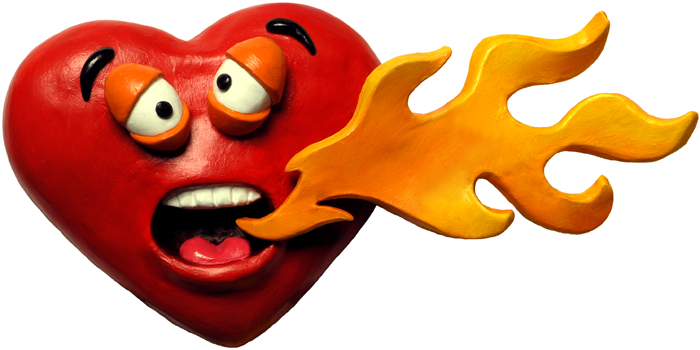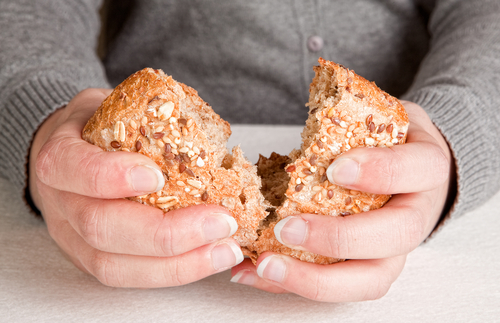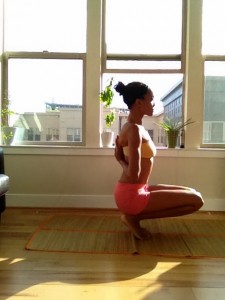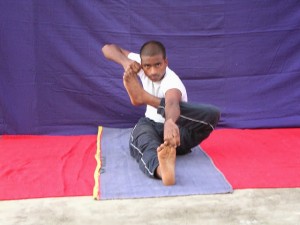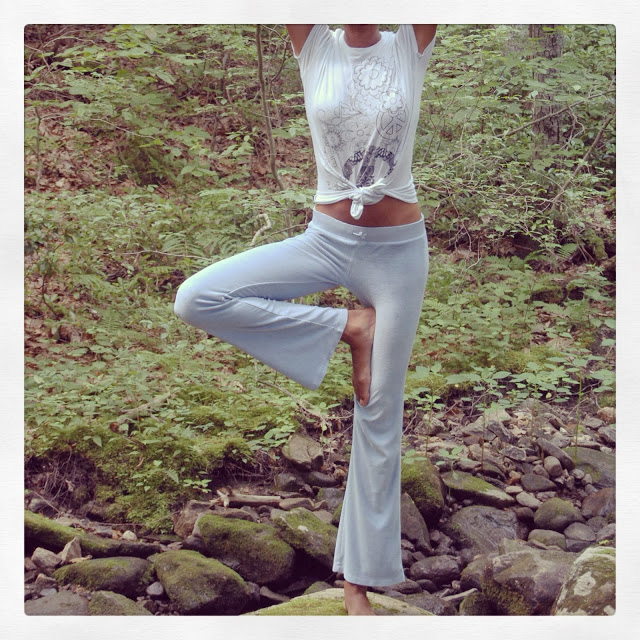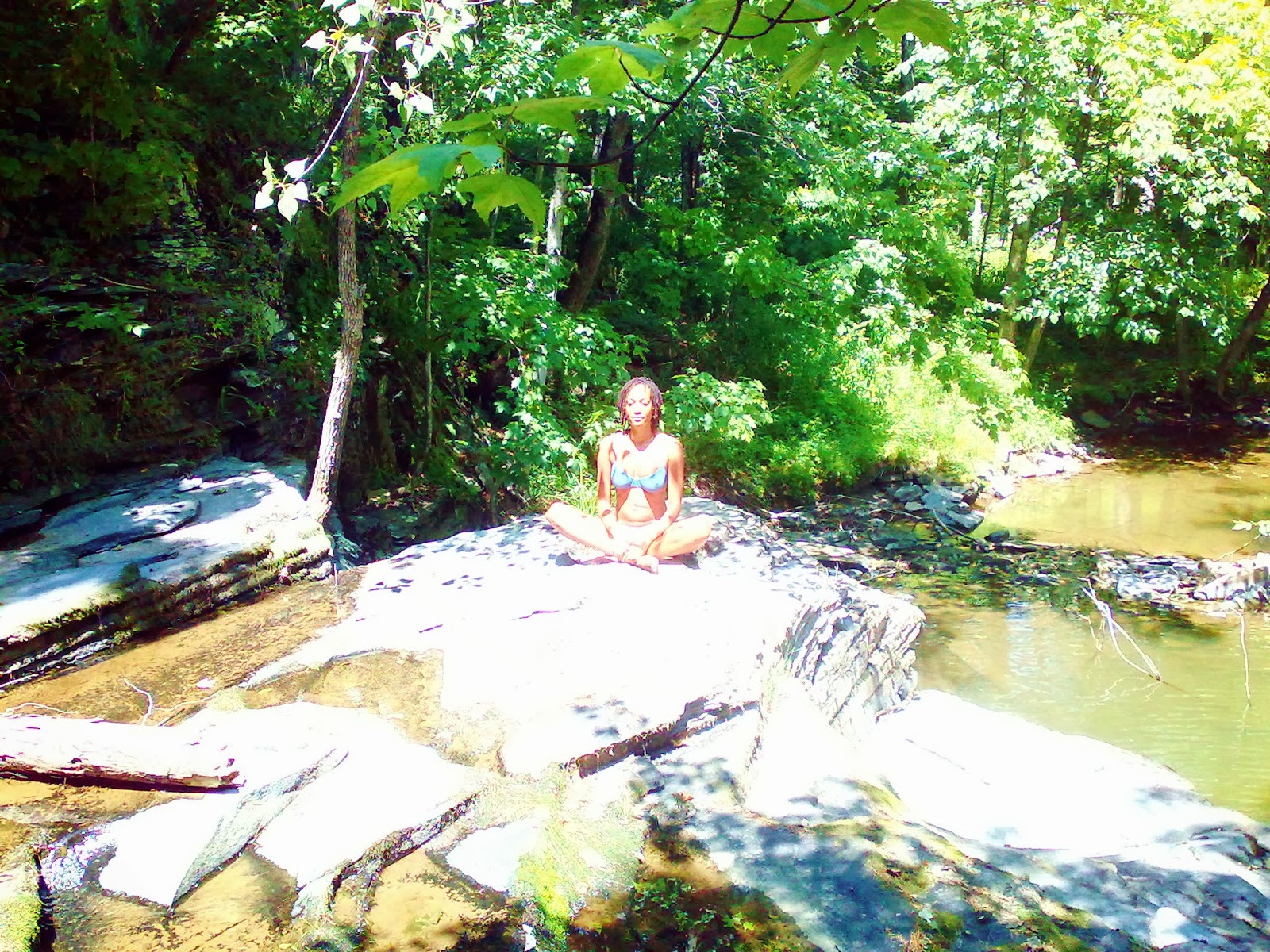Tags
acne aging anti-aging beauty detox diet exercise fasting healing health healthy lifestyle healthy living healthy recipes inspiration juicing Living la Vida Raw meditation mindfulness Move Your Body Natural Beauty natural cures Natural Cures natural remedies nutrition nutritionist parasites raw raw food Raw Food for Thought raw foods raw girl Raw News raw recipes Raw Spirit Recipes skin spirulina stress vegan vegan lifestyle vegan recipes vegetarian Veggie Love wellness yogaNewsletter Sign-up
Tag Archives: healthy lifestyle
Heartburn – Why it Happens and Simple Solutions
Food goes down the esophagus, through the lower esophageal sphincter (LES), and into the stomach. The LES is a valve that normally stays closed after food has passed through. However, there are certain situations where it will open and allow contents of the stomach to come back up into the esophagus, causing burning from exposure of the esophageal tissue to hydrochloric acid (HCl). The esophagus is not lined with mucous the way the stomach is to protect it from HCl exposure as the body does not expect food to come back up the esophagus. All situations where food and HCl come back up into the esophagus thus cause discomfort.
It is commonly believed (and promoted by the medical and pharmaceutical professions as well as the media) that heartburn should be relieved by taking products, which either neutralize stomach acid (HCl) or prevent the body from producing it. Although these strategies may provide temporary relief from discomfort, they are counterproductive to proper digestion and healthy nutrition in the long run, which requires regular and copious production of HCl. Therefore, the emphasis with heartburn should be on first healing irritated esophageal, LES, and stomach tissue with supplements (talk to your holistic health practitioner about how to do this) and employing the strategies outlined below.
What Causes Food to Come Back Up the Esophagus
Consumption of alcohol and/or caffeine can overly relax the LES muscle – causing the muscle to fail to close properly, allowing contents to come up and burn the esophagus.
- Solution: Avoid alcohol and caffeine.
An overly full stomach can put pressure on the LES to open – this leads to stomach contents coming up and burning the esophagus.
- Solution: Eat small meals – stop eating before you feel full.
Food staying in the stomach too long due to insufficient hydrochloric acid production. Natural occasional spasms of the LES open it up very briefly, but long enough for food and HCl to come up into the esophagus when food is in there for too long.
- Solution:Follow strategies for optimal HCl production and concentration: eat in a relaxed state; avoid stress in general and/or learn to manage it; make sure you are well hydrated all the time; avoid drinking more than 6 ounces of liquid during meals; avoid alcohol, sugar and caffeine; and avoid any foods you know you are sensitive to.
Population of the LES by “bad” bacteria from insufficient HCl production– this allows “bad” populations to root and weaken the LES muscle. The LES then fails to close properly, again allowing contents of the stomach to come up into the esophagus.
- Solution:Follow strategies for optimal HCl production and concentration, and consume probiotic foods and beverages daily such as yogurt, kefir (if you tolerate dairy), cultured vegetables, and kombucha.
Excess gas in the stomach created by “bad” bacteria will also put pressure on the LES to open and allow food and HCl to come up into the esophagus. The bacteria feeds on foods putrefying in the stomach when HCl production is insufficient to kill them.
- Solution: Follow strategies for optimal HCl production and concentration, and consume probiotic foods and beverages daily.
Consumption of foods that weaken the LES – fats, chocolate, coffee, mints (especially peppermint and spearmint), sugar, alchohol, onions, and any food you are sensitive to will weaken the LES, allowing contents to come up into the esophagus.
- Solution: Avoid foods you are sensitive to as well as fats, chocolate, coffee, mints (especially peppermint and spearmint), sugar, alchohol, and onions. (Note: Certain prescription medications can also weaken the LES: bronchodilators, NSAIDs, calcium channel blockers, Beta-blockers, Diazepam, Nitrates, and Demerol.)
Consumption of foods that irritate the esophagus, including foods you are sensitive to – this will make heartburn doubly uncomfortable. Common esophageal irritants include: citrus fruits and juices, tomato-based foods, spicy foods, coffee, and carbonated drinks. Common foods that people are sensitive to include: gluten in wheat and other grains and casein in dairy products.
- Solution: Avoid citrus fruits and juices, tomato-based foods, spicy foods, coffee, and carbonated drinks. Also avoid foods that you have noticed you are sensitive to in any way. Do a two-week challenge and cut out the major allergens like gluten and casein, then add them back in and see what changes you notice. Do this with other suspected foods as well and remove them permanently if they are causing problems. (Note: Certain over the counter medications can also irritate the esophagus: aspirin, NSAIDs, Tetracycline, Quinidine, Potassium chloride tablets, and iron salts.)
– Babette
To learn more about Babette, click here
Breaking BreadUnderstanding How Wheat (and Gluten) Hurt Our Bodies, Part II
Issue #2 – gluten’s effect on the brain. Gluten is the only grain protein which, when digested into polypeptide chains, crosses the blood brain barrier. This is true for both the new “dwarf” wheats as well as the heritage wheats. And what does it do in the brain? Among other things, these gluteomorphins lodge in the endorphin receptor sites, causing . . . you guessed it! Euphoria. Mild euphoria for some, greater for others, but euphoria nonetheless. And so gluten in wheat is addictive. It can be subtle; all people know is that they crave certain foods – if you pay attention, many of the foods that are craved contain wheat and gluten. This craving side effect of eating wheat in people with normal brain activity leads to weight gain and the development of diabetes.
This is bad enough, but in people with different brain activity such as ADHD symptoms or autism symptoms, or even schizophrenia, the gluten in wheat can cause great exacerbation of symptoms. So psych wards which have removed wheat have seen tremendous calming of hallucinations and delusions only to have them get worse again when wheat is added back into the cafeteria food, for example. And children with autism show much more stimming activity when wheat is consumed.
Issue #3 – gluten’s effect on the intestinal tract. Consumption of gluten leads to higher production by the body of a protein called zonulin, which loosens the tight junctures in the intestinal lining. A tightly woven intestinal lining is what keeps undigested food from going into the abdominal cavity and ending up in the bloodstream, where they elicit immune responses. Essentially, eating gluten results in a leaky gut, especially in those who already have impaired digestion, and this can lead to autoimmune disorders as described at the beginning of the article. Although people tend to associate Celiac Disease and gluten sensitivity with digestive symptoms, rarely do people realize that zonulin is doing its dirty deed in their intestinal tract even if they are not sensitive to gluten.
Another thing that people don’t usually realize is that most of the devastation caused by ingestion of wheat is not digestive, and because most people think wheat issues mean digestive problems, many people affected by wheat are currently experiencing symptoms that are “mysterious” – unrecognized and untreated. There is a huge educational campaign currently under way in the medical community, both holistic and conventional, to correct this misunderstanding.
Issue #4 – gluten’s effect on weight gain and the development of diabetes. The type of starch in wheat, amylopectin A, is different from the starch in things like potatoes, beans, and other grains, and one of its characteristics is that it is very easily digested. Although this sounds like a good thing, in fact it is not, because what it means is that the starch in wheat is immediately converted to glucose and raises blood sugar quickly. When blood sugar is raised quickly in the body, the body sees it as dangerous and immediately over-secretes insulin to get the glucose level down. But why does it over-secrete insulin, you ask. Well, the pancreas’ job was never to balance your blood sugar – it was to store energy in fat tissue for lean times. But we make the pancreas balance our blood sugar – it obliges, but unfortunately it does so in a very primitive way. It tends to overreact and secrete so much insulin that our blood sugar then falls quickly, which is a different kind of emergency for the body.
At this point the adrenal glands get involved and shoot out adrenaline and direct the body to take glucose back out of storage and dump it into the blood stream again, and here we are on the blood sugar roller coaster. When we do this for enough years, the pancreas, liver, and adrenal glands take a big hit, and we develop either severe hypoglycemia or insulin resistance, or diabetes, or all of the above in succession. What happens to us depends on which of our organs is weakest genetically, which has been hit hardest by our habits, and whether we change our habits.
The lesson to draw from all of this is that wheat and gluten are dangerous for everyone, not just for people with wheat sensitivity, and this is true whether you are eating new wheats or heritage wheats, although more so for new wheats. The good news, though, is that it is easy to live without gluten, and it exposes people to new foods. Not to sound cliché, but every problem is an opportunity!
– Babette
To learn more about Babette, click here
On Your Toes with the Tiptoe Pose
If you are looking for a way to tone your bottom half without sweaty workouts and countless squat sessions, try Tiptoe pose. A pose which calls for agility and balance, the tiptoe will offer you a calm and peaceful alternative to the standard exercise fare. This asana opens your hips, stretches your thigh muscles, and increases flexibility in your knees, toes and ankles.
Due to the level of attention and focus required in the intermediate variations of this pose, its practice develops a sharpened mental focus, while also improving your memory and balance. Pictured here is a stretch to help you work up to the advanced level of tiptoe.
In the advanced level, the benefits for men are said to outweigh the perks of Viagra! Apparently, the stretch resulting form crossing one leg over the other while still balancing on the toes of one foot, rev up the veins through which semen passes, unblocking and clearing them. The effects of this activity include increased sexual stamina, deepened orgasm and impotency prevention. Surely, this is a pose that will keep you on your toes!
– Sia
To learn more about Sia, click here
Part 3 – Why Fad Diets Don’t Work
 The deeper I get into my study of nutrition the more I have come to embrace bio-individuality as the best term to sum up my personal beliefs about healthy eating. You may have heard the saying “one man’s food is another man’s poison.” Well, bio-individuality is the concept that best summarizes this because it is essentially saying there is no one perfect way of eating for everyone. Every single human being, including you and I, have unique genetic make-ups, blood types, ancestry, metabolism, and food intolerances.
The deeper I get into my study of nutrition the more I have come to embrace bio-individuality as the best term to sum up my personal beliefs about healthy eating. You may have heard the saying “one man’s food is another man’s poison.” Well, bio-individuality is the concept that best summarizes this because it is essentially saying there is no one perfect way of eating for everyone. Every single human being, including you and I, have unique genetic make-ups, blood types, ancestry, metabolism, and food intolerances.
Part of your job, when walking the healthy living path, is to be your own health guru and figure out what makes your stomach and your body happy and healthy. Some bodies metabolize carbs better, and some proteins. Some people cannot be optimally healthy on an animal based diet or diet that includes dairy. Some people may not thrive on a vegan or raw diet, either because of improper supplementation, eating a diverse group of foods, or because their body is simply not getting the levels of essential nutrients or fat soluble vitamins it needs to function at its best. When this happens individuals find themselves with candida imbalances, tooth decay, fatigue or other signs that something is off-balance in the body.
I am a firm believer that optimal health should always be the end goal, and sole focus. This means that rather than clinging to a diet like a religion that leads to illness and eventually disease, each of us should carefully mine the information we hear about different food choices and diets and filter out by testing on our own body, and discovering what is appropriate for us. So how do we avoid falling into the fad diet trap?
As the ancient Egyptians put it: “Know thyself.” You have to know your ancestry, learn what foods your body does and does not like, and decipher what any imbalances that arise are trying to tell you. Most doctors can’t do this for you. It takes some personal initiative and perhaps some digging with the help of non-traditional and traditional health practitioners along with a nice dose of intuition. But when you put in the work it’s well worth it. My idea of a healthy and balanced world is one is which bio-individuality is embraced fully, where all of us avoid the factory and embrace the field, and where dietary labels don’t need to exist because everyone eats whole fresh good karma foods that support their unique and incredible body. -XoXo Raw Girl
Click to read Part 1 and Part 2 of Make Your Health Your Best Accessory.
The Healing Benefits of Tree Pose
Muscle tone in your legs is one of the first things to go when you have a sedentary, computer-centered life. That is why it so good to get up from your laptop every few hours and stand in tree pose.
Vrikshasana, in its call for balance and poise, tones the leg muscles, strengthens the spine and increases flexibility in the feet. A great pose for core building, Tree will increase your coordination, teach you patience and calm your mind.
Like a tree’s trunk you become rooted in your sense of self and grounded with conviction, while also expressing freedom, expansion and a heavenward gaze like the branches and leaves. Hunching over at your desk is commonplace I know, but the spine wants to fully extend, as does the spirit. Open your shoulders with Tree pose to increase your range of motion and improve posture.
Daily practice of this asana will bring waves of inner strength, self-confidence and peace to balance the fast-paced excesses of modern life.
– Sia
To learn more about Sia, click here
The Healing Benefits of Lotus Pose
Sometimes it is good to just sit still and do nothing. Daily life can be so hectic if moments are not taken to simply be and nothing else. Motionless sitting in the easy version of the yoga Lotus pose can bring about a centering of the mind, body and spirit.
This pose can open up a congested heart and free a troubled mind, bringing about an expanded sense of awareness while decompressing the body. Taking time to consciously relax is what we all need, away from the TV, internet, phone and other distractions. When seated in this asana you will find that tensions stored in a compressed, anxious and tight body begin to release immediately. A more positive and trusting outlook is established and maintained by continued practice of advanced Lotus, as well as its beginner variations. A great position from which to pray or meditate, Lotus pose is like a flower whose petals open at dawn revealing more beauty which each expression.
If you are uneasy, stretching into Lotus can bring serenity.
If your mind is racing, easing into Lotus pose can bring peace.
If you have back or hip pain, Lotus can help relieve it.
If you suffer from exhaustion, Lotus pose can increase vitality and bring on more restful sleep.
This simple, easy pose is synonymous with tranquility, peace and joy. Try it and experience these benefits first-hand.
– Sia
To learn more about Sia, click here
Sankalpa: Reflect and Resolve
Pop quiz! What is one of the most important tools when doing yoga?
While most of us are always on top of making sure we have our mats, and some of us are making sure that we have on the latest workout get up before hitting the studio, almost all of us are forgetting the item that holds the most value. Our Sankalpa. One should never leave home without it.
Sankalpa is the inner work of the practice; it is the prayer or the good intention that orchestrates the movement. Seeking out and setting the intention is an essential component in anyone’s yoga, without it, one cannot reap the full benefits of their practice. By utilizing the greatness of Sankalpa, we can work to align our spiritual truths with our worldly behavior.
“The essence of your intention is stored in a cosmic database, every dedication that is in line with your destiny will eventually be released into fruition.”
When setting your intention, be mindful of keeping it just that. Try not to turn it into a request for something tangible by setting a goal. With an intention we always start where we belong. The beginning. The other wonderful thing about an intention is that you can set it up so no matter what direction life takes you, you are content and receptive to its many rhythms. An example of an intention could be the ability to express joy no matter what adversities you face.
How to turn a goal into an intention:
“My goal is to open up a cafe because I’m passionate about making people happy with my delicious foods.”
Turn it into an intention by saying:
Through my practice, it is my desire to generate happiness.
Now you try!
~ Sihnuu Hetep
To learn more about Sihnuu, click here
Yoga: Fullest Expression
As you ground and grow in your much less wobblier vriksasana, you hear the instructor utter the words you least look forward to.
“Fullest expression!”
Feeling confused and alone, you’ve now lost your drishti. Your eyes wander about the class and eventually toward home girl two mats over, who has somehow managed to get her arms into some kind of contortionist style prayer fold.
With your teacher’s presence near, you make a conscious effort to reset your focus. You frantically throw your arms in the air and think to yourself, this will work for sure.
“Lovely yogis,” your teacher replies.
You feel charged as your hands make their way back to anjanayasana. You’ve made it through another class without flaking out in your expression.
When an instructor calls “fullest expression,” what is being asked of the student? Is the teacher looking for the craziest arms in tree pose? Or perhaps the straightest and highest kicked leg in one-legged wheel? It is very easy to get caught up in the aesthetic of a yoga practice when those words are said in class.
I believe that pouring self: heart, mind, and body, entirely into practice is the way to access one’s fullest expression. At times, coming into one’s fullest expression could mean staying in the in the most basic form of the posture, tapping into the sounds of the heart and the deep rhythm of inhales and exhales.
There is no need to do anything overly taxing, be gentle and allow yourself to flow freely so that you may connect with your inner guide. This is a part of the practice cannot be orchestrated and should be full of your authenticity.
Trust in your breath and be.
~ Namaste, Sihnuu
To learn more about Sihnuu, click here






